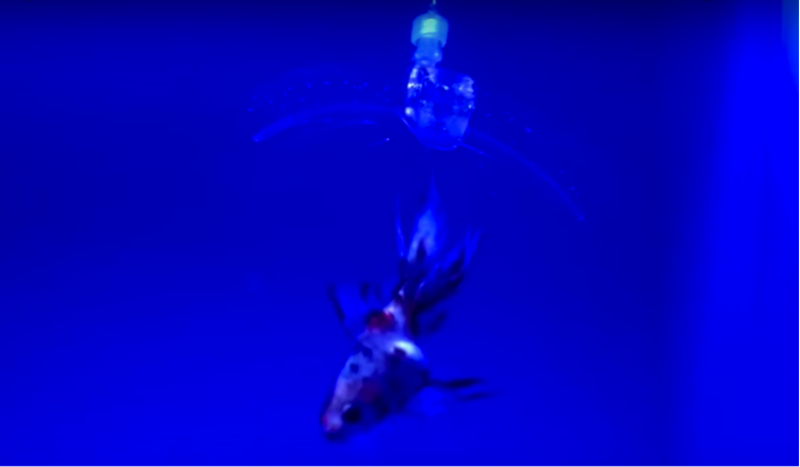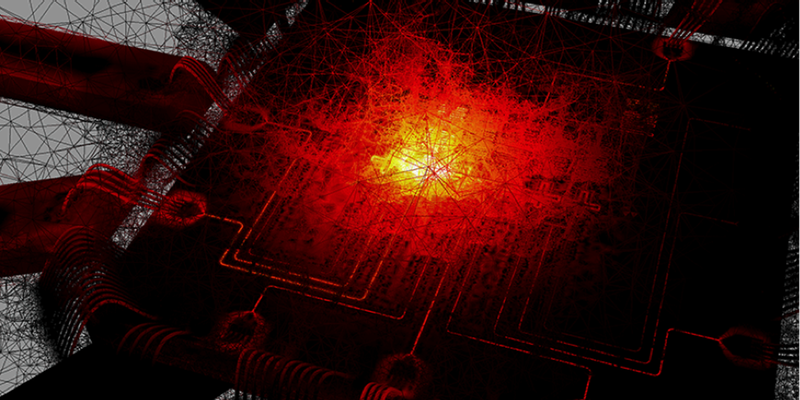Meetings: Seen and Heard at the 2017 APS March Meeting
The American Physical Society welcomed about 10,000 attendees to this year’s March Meeting, held in New Orleans. In addition to condensed-matter physics topics such as superconductivity, photovoltaics, polymer physics, and topological materials, the diverse meeting also features biophysics, climate research, atomic physics, and much more. It’s also a great place to find out about jobs in industry or to showcase undergrad research at the annual poster competition. As a bonus, the massive convention center was simultaneously hosting a catering meeting, so we could stop and read cookbooks between physics talks. Here’s a sampling of what the March Meeting had to offer.
–David Ehrenstein, Jessica Thomas, and Katherine Wright
Where the crowds were. With more than 50 parallel sessions, the March Meeting is perfect for the fickle listener: if you don’t like one talk, you can dart out and head to another. But some talks were too popular for late arrivals. Crowds overwhelmed the rooms for John Martinis of Google and former US Secretary of Energy and Nobel Laureate Steven Chu, as well as a session giving a historical perspective on superconductivity. Battling the throng at one door, we overheard someone say “It’s like a rock concert in here.”
The ultimate magnetic stretch. If Magneto and Plastic Man combined their superhero powers, the outcome might resemble the new material presented by Aaron Hamann of the University of Minnesota. It consists of half-centimeter-long segments of metal wire embedded in a soft polymer matrix. When exposed to a magnetic field of 0.06 tesla, the wires rotate, causing the matrix to stretch 20% in length—the largest magnetically induced strain ever recorded. The team has yet to optimize the system, so the effect could get larger.
Hydrogel robotics. Movie studios have been scaring us with robotic sharks for a while now, but the technology may be ready for an upgrade. Xuanhe Zhao of MIT discussed a system for moving submerged robotic elements made of a soft, transparent, and tear-resistant material called hydrogel. The technique moves parts rapidly and with more force than other schemes by inflating voids within the material with water. Zhao showed video of a hydrogel arm gently grabbing and releasing a swimming fish.
“Quantum-grade” silicon. The semiconductor industry revolves around silicon, so this element is perhaps the logical choice for qubits. However, the silicon-29 isotope—found at levels of about 5% in natural silicon—has an unpaired spin that interferes with qubit states. Joshua Pomeroy of NIST described ongoing work to filter silicon-29 from the more common silicon-28 using a calutron—a mass spectrometer that was originally developed for the Manhattan Project to separate uranium isotopes. So far, he and his colleagues have achieved 99.99998% enriched silicon-28, the highest figure to date.
Big Data wants you, physicists. Who will win the next election? How might a Kim Kardashian tweet affect beauty product sales? Companies are looking to hire people who can analyze the heaps of data needed to make these sorts of predictions. And physicists are “prime candidates,” said John Rumble from R&R Data Services in Maryland, because they are quick to understand a problem, know about data-gathering tools, and can differentiate cause and effect from correlation. Where they may struggle, Rumble said, is being too fixated on knowledge gained rather than gaining market share.
The dodo’s true colors. Despite it being a poster child for human-caused extinctions, the actual color of the now-gone dodo bird is unknown. But Andrew Parnell from the University of Sheffield may soon have an answer. At the end of his talk on structural colors in bird feathers and beetle shells, Parnell teased the audience with an image of a fragment he obtained from one of the last remaining dodo feathers held at London’s Natural History Museum, but he kept mum on what his initial examinations revealed.
AutoCAD for the quantum age. Now that physicists have successfully put multiple qubits on a chip, they have to deal with a niggling engineering problem: unwanted communication, or crosstalk, between the qubits. Rather than figure out the level of crosstalk on a chip by trial and error, a company called Anyon Systems simulates it with hundreds of supercomputers. This virtual proving ground can save money and months of time, said Anyon founder Alireza Najafi-Yazdi, who added “You wouldn’t build an aircraft without simulating it first.”
Random yet synchronized. On their own, E. coli cells are erratic swimmers, darting back and forth abruptly. However, Yilin Wu from the Chinese University of Hong Kong showed that if you pack millions of these bacteria together, then population-scale collective oscillations can spontaneously develop. This is the first time such periodic motion has been seen in a system where the individual elements don’t also oscillate. When asked what benefit this apparent synchronization might offer the bacteria, Wu admitted: “we do not have a clue.”
Bugs as food. Black soldier-fly larvae—thumb-size grubs that feed on our food scraps—may soon find themselves on the menu, as companies have started rearing these bugs to turn waste into edible protein. To optimize this transformation, Olga Shishkov is exploring how the grubs feed. She has found that they consume scraps faster in large groups where hungry larvae are constantly poised to replace sated ones. To prep future customers, she assures: “I have eaten one, and it was not disgusting.”
Shiba states. One day, particle physicists hope to tell us whether neutrinos are Majorana particles, meaning they are their own antiparticle. But in the meantime, condensed-matter physicists have their own variety of Majorana states to explore. In the session on Majorana States in Topological Superconductors, we heard about a relatively new route to making Majorana states: placing a chain of magnetic atoms on a superconductor surface. The chains host so-called Shiba states, and researchers described experimental and theoretical work that explores these states with different atoms or with atoms arranged in new geometries (Shiba lattices).







